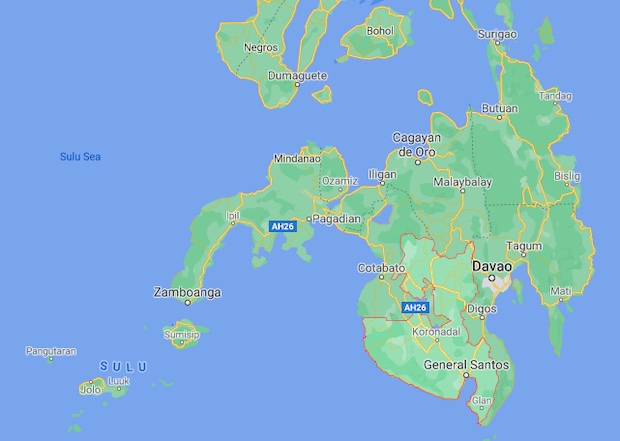
Soccskargen, or Region 12 (outlined in red), in Mindanao is composed of the provinces of South Cotabato, Cotabato (formerly North Cotabato) Sultan Kudarat, and Sarangani and General Santos City. (Image from Google Maps)
GENERAL SANTOS CITY, South Cotabato, Philippines – The Department of Health in the Soccsksargen (DOH 12) has expanded its biosurveillance of the Omicron variant in the wake of the increasing new COVID-19 infections in the region.
Dr. Sulpicio Henry Legaspi, DOH 12 assistant director, said local authorities had submitted all positive cases detected in the region in the past several days for genome sequencing to check for the possible presence of the highly contagious variant.
He said the surveillance was being done in coordination with the rural health units and molecular laboratories in the region’s four provinces and four cities.
The region’s total active cases are at 503 as of Thursday, rising from the 115 recorded just last Jan. 1.
Of the 503 cases, General Santos City accounted for the highest with 261, South Cotabato with 128, North Cotabato with 84, Sultan Kudarat with 20, and Sarangani with 10.
“We still don’t have a case of the Omicron variant, but we’re seeing an increase in infections right now,” Legaspi said.
Until the results of the genome sequencing are out, health authorities could not yet say whether the increasing infections in the region, especially in this city, were triggered by the Omicron variant, according to Legaspi.
He said they expect the release of the results from the University of the Philippines-Philippine Genome Center (UP-PGC) in 14 days.
Among those who tested positive was a recovered COVID-19 patient who was confined at the South Cotabato Provincial Hospital last December, the hospital chief, Dr. Conrado Braña, said.
He said the patient tested positive after arriving from Metro Manila and exhibited a low cycle threshold or CT value in a reverse transcription-polymerase chain reaction (RT-PCR) test result.
“That is an indication of a possible variant infection. Hopefully, it’s not Omicron,” he said.
Dr. Dyan Zubelle Parayao, head of the DOH 12 epidemiology and surveillance unit, earlier said they had warned rural health units early regarding suspected variant cases to ensure immediate intervention.
Biosurveillance involves the collection of suspected samples, validation, approval of sample list, and their submission to UP-PGC for whole genome sequencing or analysis of the genetic code.
Parayao said the results would come out in two to three weeks, with the probable cases usually tagged by then as already recovered.

